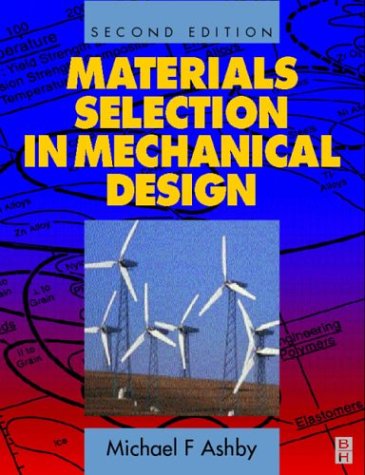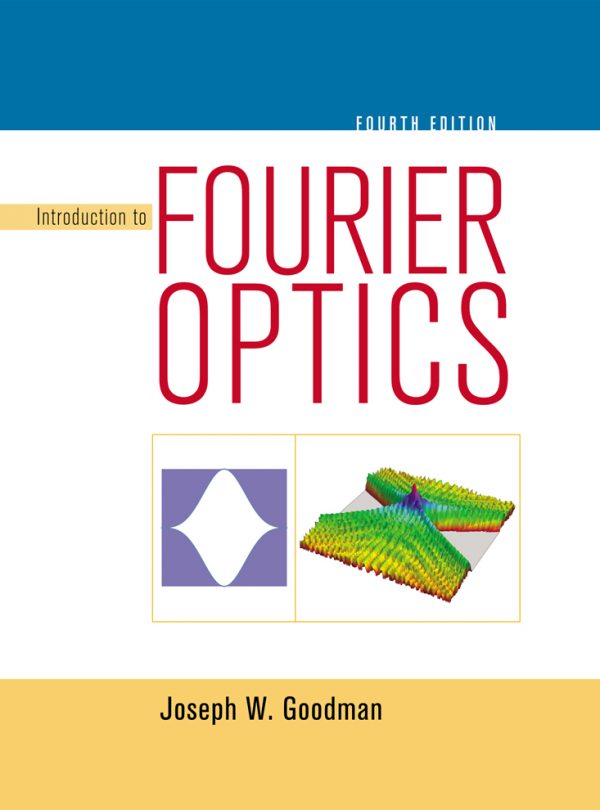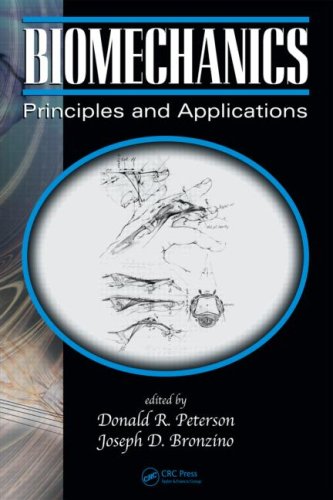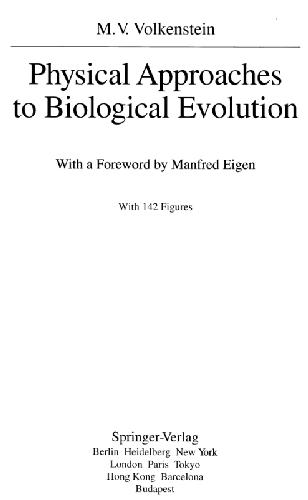Michael F. Ashby9780750643573, 0-7506-4357-9
Table of contents :
Front Matter……Page 1
Preface……Page 3
Acknowledgements……Page 5
Index……Page 0
B……Page 6
C……Page 7
D……Page 10
E……Page 13
F……Page 14
G……Page 15
K……Page 16
M……Page 17
O……Page 21
P……Page 22
S……Page 25
T……Page 28
V……Page 29
Y……Page 30
Table of Contents……Page 31
1.2 Materials in Design……Page 39
1.3 The Evolution of Engineering Materials……Page 41
1.4 The Evolution of Materials in Vacuum Cleaners……Page 42
1.5 Summary and Conclusions……Page 44
1.6 Further Reading……Page 45
2.2 The Design Process……Page 46
2.3 Types of Design……Page 48
2.4 Design Tools and Materials Data……Page 49
2.5 Function, Material, Shape and Process……Page 51
2.6 Devices to Open Corked Bottles……Page 52
2.7 Summary and Conclusions……Page 56
2.8 Further Reading……Page 57
3.2 The Classes of Engineering Material……Page 58
3.3 The Definitions of Material Properties……Page 60
3.5 Further Reading……Page 69
4.2 Displaying Material Properties……Page 70
4.3 The Material Property Charts……Page 74
4.4 Summary and Conclusions……Page 101
4.5 Further Reading……Page 102
5.2 The Selection Strategy……Page 103
5.3 Deriving Property Limits and Material Indices……Page 107
5.4 The Selection Procedure……Page 115
5.5 The Structural Index……Page 120
5.7 Further Reading……Page 121
6.2 Materials for Oars……Page 123
6.3 Mirrors for Large Telescopes……Page 127
6.4 Materials for Table Legs……Page 131
6.5 Cost – Structural Materials for Buildings……Page 135
6.6 Materials for Flywheels……Page 138
6.7 Materials for High-Flow Fans……Page 143
6.8 Golf-Ball Print Heads……Page 146
6.9 Materials for Springs……Page 149
6.10 Elastic Hinges……Page 154
6.11 Materials for Seals……Page 158
6.12 Diaphragms for Pressure Actuators……Page 161
6.13 Knife Edges and Pivots……Page 164
6.14 Deflection-Limited Design with Brittle Polymers……Page 168
6.15 Safe Pressure Vessels……Page 172
6.16 Stiff, High Damping Materials for Shaker Tables……Page 176
6.17 Insulation for Short-Term Isothermal Containers……Page 179
6.18 Energy-Efficient Kiln Walls……Page 182
6.19 Materials for Passive Solar Heating……Page 186
6.20 Materials to Minimize Thermal Distortion in Precision Devices……Page 190
6.21 Ceramic Valves for Taps……Page 193
6.22 Nylon Bearings for Ships’ Rudders……Page 196
6.23 Summary and Conclusions……Page 199
6.24 Further Reading……Page 200
7.2 Shape Factors……Page 201
7.3 The Efficiency of Standard Sections……Page 211
7.4 Material Limits for Shape Factors……Page 214
7.5 Material Indices which Include Shape……Page 219
7.6 The Microscopic or Micro-Structural Shape Factor……Page 221
7.7 Co-Selecting Material and Shape……Page 225
7.8 Summary and Conclusions……Page 227
Appendix: Geometric Constraints and Associated Shape Factors……Page 229
8.2 Spars for Man-Powered Planes……Page 233
8.3 Forks for a Racing Bicycle……Page 237
8.4 Floor Joists: Wood or Steel?……Page 239
8.5 Increasing the Stiffness of Steel Sheet……Page 243
8.6 Ultra-Efficient Springs……Page 245
8.7 Summary and Conclusions……Page 248
9.2 Selection by Successive Application of Property Limits and Indices……Page 249
9.3 The Method of Weight-Factors……Page 251
9.4 Methods Employing Fuzzy Logic……Page 253
9.5 Systematic Methods for Multiple Constraints……Page 254
9.6 Compound Objectives, Exchange Constants and Value-Functions……Page 257
9.7 Summary and Conclusions……Page 265
9.8 Further Reading……Page 266
10.2 Multiple Constraints – Con-Rods for High-Performance Engines……Page 267
10.3 Multiple Constraints – Windings for High Field Magnets……Page 271
10.4 Compound Objectives – Materials for Insulation……Page 276
10.5 Compound Objectives – Disposable Coffee Cups……Page 280
10.6 Summary and Conclusions……Page 284
11.2 Processes and Their Influence on Design……Page 285
11.3 Process Attributes……Page 300
11.4 Systematic Process Selection……Page 301
11.5 Screening: Process Selection Diagrams……Page 303
11.6 Ranking: Process Cost……Page 313
11.8 Summary and Conclusions……Page 318
11.9 Further Reading……Page 319
12.2 Forming a Fan……Page 320
12.3 Fabricating a Pressure Vessel……Page 323
12.4 Forming a Silicon Nitride Micro-Beam……Page 328
12.5 Forming Ceramic Tap Valves……Page 329
12.6 Economical Casting……Page 331
12.7 Computer-Based Selection – a Manifold Jacket……Page 332
12.8 Computer-Based Selection – a Spark Plug Insulator……Page 337
12.10 Further Reading……Page 340
13.2 Data Needs for Design……Page 342
13.3 Screening: Data Structure and Sources……Page 344
13.4 Further Information: Data Structure and Sources……Page 346
13.5 Ways of Checking and Estimating Data……Page 348
13.6 Summary and Conclusions……Page 351
Appendix: Data Sources for Material and Process Attributes……Page 353
14.2 Data for a Ferrous Alloy – Type 302 Stainless Steel……Page 374
14.3 Data for a Non-Ferrous Alloy – Al-Si Die-Casting Alloys……Page 375
14.4 Data for a Polymer – Polyethylene……Page 378
14.5 Data for a Ceramic – Zirconia……Page 380
14.6 Data for a Glass-Filled Polymer – Nylon 30% Glass……Page 382
14.7 Data for a Metal-Matrix Composite (MMC) – Ai/SiCp……Page 384
14.8 Data for a Polymer-Matrix Composite – CFRP……Page 385
14.9 Data for a Natural Material – Balsa Wood……Page 387
14.10 Summary and Conclusions……Page 389
14.11 Further Reading……Page 390
15.2 Aesthetics and Industrial Design……Page 391
15.3 Why Tolerate Ugliness? The Bar Code……Page 394
15.4 The Evolution of the Telephone……Page 395
15.5 The Design of Hair Dryers……Page 397
15.6 The Design of Forks……Page 399
15.8 Further Reading……Page 401
16.2 The Market Pull: Economy Versus Performance……Page 403
16.3 The Science-Push: Curiosity-Driven Research……Page 406
16.4 Materials and the Environment: Green Design……Page 407
16.6 Summary and Conclusions……Page 413
16.7 Further Reading……Page 414
Appendix A: Useful Solutions to Standard Problems……Page 415
A.1 Constitutive Equations for Mechanical Response……Page 416
A.2 Moments of Sections……Page 418
A.3 Elastic Bending of Beams……Page 420
A.4 Failure of Beams and Panels……Page 422
A.5 Buckling of Columns and Plates……Page 424
A.6 Torsion of Shafts……Page 426
A.7 Static and Spinning Discs……Page 428
A.8 Contact Stresses……Page 430
A.9 Estimates for Stress Concentrations……Page 432
A.10 Sharp Cracks……Page 434
A.11 Pressure Vessels……Page 436
A.12 Vibrating Beams, Tubes and Discs……Page 438
A.13 Creep and Creep Fracture……Page 440
A.14 Flow of Heat and Matter……Page 442
A.15 Solutions for Diffusion Equations……Page 444
A.16 Further Reading……Page 446
Appendix B: Material Indices……Page 447
C.1 Introduction……Page 453
Chart 1: Young’s Modulus against Density……Page 458
Chart 2: Strength against Density……Page 460
Chart 3: Fracture Toughness against Density……Page 462
Chart 4: Young’s Modulus against Strength……Page 464
Chart 5: Specific Modulus against Specific Strength……Page 466
Chart 6: Fracture Toughness against Young’s Modulus……Page 468
Chart 7: Fracture Toughness against Strength……Page 470
Chart 8: Loss Coefficient against Young’s Modulus……Page 472
Chart 9: Thermal Conductivity against Thermal Diffusivity……Page 474
Chart 10: T-Expansion Coefficient against T-Conductivity……Page 476
Chart 11: Linear Thermal Expansion against Young’s Modulus……Page 478
Chart 12: Normalized Strength against Linear Expansion Coeff…….Page 480
Chart 13: Strength-at-Temperature against Temperature……Page 482
Chart 14: Young’s Modulus against Relative Cost……Page 484
Chart 15: Strength against Relative Cost……Page 486
Chart 16: Dry Wear Rate against Maximum Bearing Pressure……Page 488
Chart 17: Young’s Modulus against Energy Content……Page 490
Chart 18: Strength against Energy Content……Page 492
Chart P1 : The Material – Process Matrix……Page 494
Chart P2: Hardness against Melting Temperature……Page 496
Chart P3: Volume against Slenderness……Page 498
Chart P4: The Shape Classification Scheme……Page 500
Chart P5: The Shape-Process Matrix……Page 502
Chart P6: Complexity against Volume……Page 504
Chart P7: Tolerance Range against RMS Surface Roughness……Page 506
D.2 Use of Materials Selection Charts……Page 508
D.3 Deriving and Using Material Indices……Page 511
D.4 Selection with Multiple Constraints……Page 519
D.5 Selecting Material and Shape……Page 522
D.6 Selecting Processes……Page 527
D.7 Use of Data Sources……Page 529
D.8 Material Optimization and Scale……Page 530
Conversion of Units……Page 533







Reviews
There are no reviews yet.